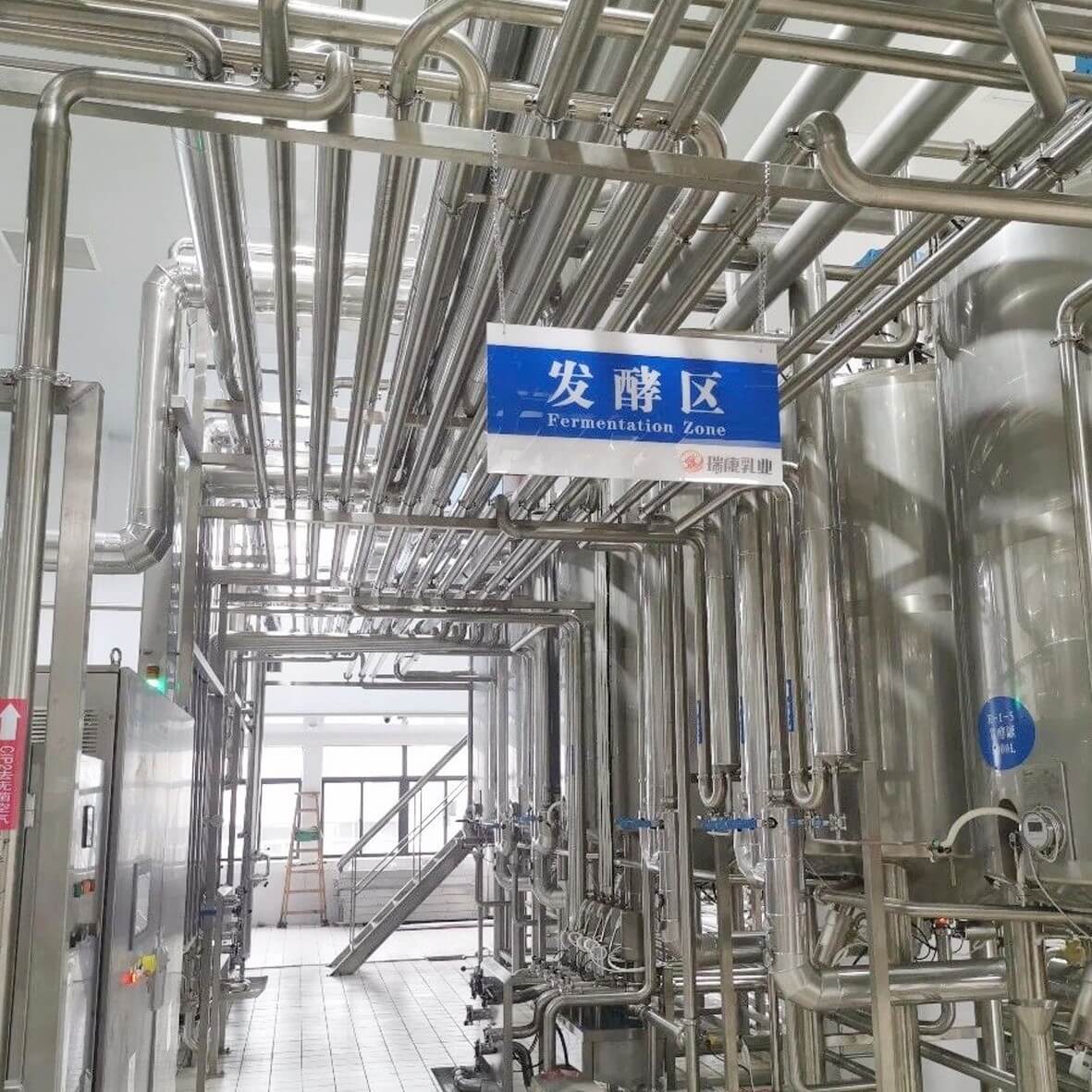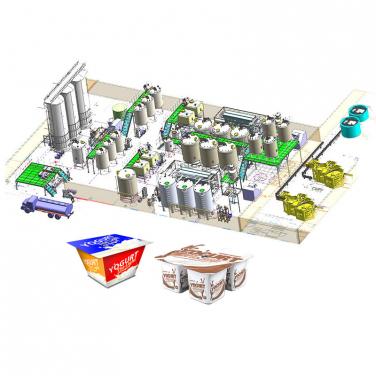
Many people particularly enjoy drinking yogurt, which has a mellow and sour taste that pure milk does not have. Many people can't help but crave it, do you know how yogurt is produced? Follow my footsteps and take a look together.
Firstly, the production of yogurt is divided into the following steps: preheating, filtration, homogenization, sterilization and disinfection, cooling, ingredients, fermentation, low-temperature storage, and canning. Our common sterilization method is pasteurization, so what is pasteurization? The pasteurization process specifically refers to the acceptance, filtration, purification, standardization and homogenization of raw materials, followed by sterilization, cooling, canning, inspection, and refrigeration.
After receiving fresh milk, the foreman heats the milk at a constant temperature of around 60 degrees Celsius. Next, the milk is filtered from coarse to fine to remove any large impurities, and then the milk is homogenized in a homogenizer. The purpose of this is to ensure that the protein clusters in the milk are evenly distributed in the milk, which greatly improves the quality of the milk, This is no different from the handling of milk. Afterwards, the milk is placed in a sterilizer for pasteurization. The temperature is around 85 degrees Celsius and the sterilization time is usually 30 minutes. If the time is too long, the nutrients in the milk will be killed and the nutrition will be lost. The sterilized milk should be cooled in a timely manner and then fermented, ensuring strict aseptic treatment during this process. The next step is the final and most important step of the entire process, which is canning. The entire process needs to be completed in a sterile environment, and the packaging is also meticulous. Generally speaking, the packaging of yogurt is glass bottles, vinyl plastic bottles, and coated composite paper, etc. The main thing is to ensure that the packaging bag can isolate light and prevent the deterioration of yogurt.

1. Ingredients
Select the required raw materials according to the material balance table, such as fresh milk, sugar, and stabilizers. Modified starch can be added separately during ingredient preparation or can be mixed with other food gums before adding. Considering that starch and food gums are mostly highly hydrophilic polymer substances, it is best to mix and add them with an appropriate amount of sugar, and dissolve them in hot milk (55 ℃~65 ℃, specific temperature selection depends on the instructions for using modified starch) under high-speed stirring to improve their dispersibility.
2. Preheating
The purpose of preheating is to improve the efficiency of the homogenization process, and the selection of preheating temperature should not be higher than the gelatinization temperature of starch. The purpose of doing so is to prevent the particle structure from being damaged during the homogenization process after starch gelatinization.
3. Homogeneous
Homogenization refers to the mechanical treatment of milk fat globules, so that they are uniformly dispersed in the milk as smaller fat globules. During the homogenization stage, the material is sheared
Collision and emptiness
The force of the three effects of acupoints. Modified starch, due to its strong mechanical shear resistance after cross-linking and modification, can maintain a complete particle structure, which is beneficial for maintaining the viscosity and body shape of yogurt.
4. Sterilization
Pasteurization is generally used, and dairy factories generally use a sterilization process of 95 ° C and 300S. Modified starch fully expands and gelatinizes at this stage, forming viscosity. 5. Cooling, inoculation, and fermentation
Modified starch is a type of high molecular weight substance that retains some of the properties of the original starch, i.e. the properties of polysaccharides, compared to the original starch. Under the pH value environment of yogurt, starch will not be utilized and degraded by bacteria, so it can maintain the stability of the system. When the pH value of the fermentation system drops to the Isoelectric point of Casein, Casein denatures and solidifies to form a three-dimensional network system skeleton connected with Casein micelles and water into a curd emulsion. At this time, the gelatinized starch can fill the skeleton, bind free water, and maintain the stability of the system.
5. Cooling, inoculation, and fermentation
Modified starch is a type of high molecular weight substance that retains some of the properties of the original starch, i.e. the properties of polysaccharides, compared to the original starch. Under the pH value environment of yogurt, starch will not be utilized and degraded by bacteria, so it can maintain the stability of the system. When the pH value of the fermentation system drops to the Isoelectric point of Casein, Casein denatures and solidifies to form a three-dimensional network system skeleton connected with Casein micelles and water into a curd emulsion. At this time, the gelatinized starch can fill the skeleton, bind free water, and maintain the stability of the system.
6. Cooling, stirring, and post ripening
The purpose of stirring yogurt cooling is to quickly inhibit the growth of microorganisms and enzyme activity, mainly to prevent excessive acid production during the fermentation process and dehydration during stirring. Due to the diverse sources of raw materials and varying degrees of denaturation, different types of denatured starch have different effects on yogurt production. Therefore, corresponding modified starch can be provided according to different needs for yogurt quality.

How to preserve yogurt products
The method of preserving yogurt is very simple. Due to the need to maintain the activity of lactic acid bacteria, yogurt should be stored in a low-temperature environment, usually around 2-8 degrees Celsius. In a 4 ℃ refrigerator, the number of lactic acid bacteria in yogurt will slowly decrease, and after 14 days, the number of live bacteria will decrease to about 1/10 of the original. If you can't finish it all at once, scoop out a portion with a clean spoon each time, and keep the rest in the refrigerator. It is recommended to keep it for no more than 3 days.Yogurt is not suitable for long-term storage at room temperature. The active lactic acid bacteria in yogurt will stop growing in an environment between 0 ℃ and 7 ℃. However, as the environmental temperature increases, the lactic acid bacteria will rapidly multiply and die. At this time, yogurt becomes an acid dairy product without live bacteria, and the nutritional value of yogurt will also be greatly reduced. It is best to drink yogurt within 2 hours after opening. After opening the yogurt, bacteria will begin to multiply and have a certain impact on the gastrointestinal tract, so it is best to refrigerate it.
Beyond Machinery specializes in the design and manufacturing of yogurt processing lines. Please contact us now, and our professional technical engineers will customize the equipment plan for yogurt processing lines and provide a quotation. Please contact us now to obtain the latest equipment plan and quotation.



